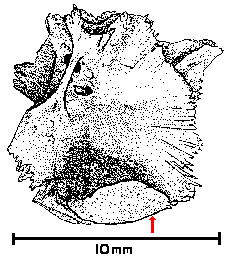
Fig. 1 Native distribution of the redear sunfish (Lepomis microlophus). Map after Lee et al. 1980, 601. Locations of (a) Range site in St Clair County and (b) Smiling Dan site in Scott County are pinpointed
The redear sunfish (Lepomis microlophus), one of nine Lepomis species found in Illinois waters, prefers warm, clear, well-vegetated, quiet waters offered by low-gradient creeks, pools of creeks and rivers, swamps, and bottomland lakes (Lee et al. 1980, 601; Pflieger 1975, 226; Smith 1979, 243). Redear is common to the south east United States (Figure 1 based on Lee et al. 1980), and the type specimen was collected from Florida's St. Johns River.

Fig. 1 Native distribution of the redear sunfish (Lepomis microlophus). Map after Lee et al. 1980, 601. Locations of (a) Range site in St Clair County and (b) Smiling Dan site in Scott County are pinpointed
However, in Illinois the redear has a sparse distribution and is found primarily in the southern part of the state (Smith 1979). It is native, but rare, in the southern portion of Missouri (Pflieger 1975). Elsewhere in each state, the species has been introduced by the respective Departments of Conservation. Redear feed on insect larvae, snails, and cladocerans (Carlander 1977, 131). Because snails are its primary food, the species has been nicknamed "shellcracker", and it has been documented that its broad, heavy pharyngeal arches with its molariform teeth are well-suited for crushing molluscs. Morphologically, the redear is supposed to resemble most closely the pumpkinseed, Lepomis gibbosus (Trautman 1981, 596). In fact, at the turn of the century, Forbes and Richardson (1908, 259) separated the genus Eupomotis (which consisted of E. heros, the redear, and E. gibbosus, the pumpkinseed) from Lepomis on the basis of lower pharyngeal arch morphology.
While the infrapharyngeal, as noted above, has been used to separate the pumpkinseed and the redear from the other sunfishes, this study notes other elements which are equally distinctive. These are the suprapharyngeal, parasphenoid, basioccipital, and prootic.
The superior and the inferior pharyngeals of the redear were found to be far more massive than those of the pumpkinseed (a distinction not made by early ichthyologists). The lower pharyngeal of the redear (Figure 2) is triangular and blocky (more so than that of the pumpkinseed), with a deep sulcus running along its lateral surface.

Fig. 2 Left inferior (lower) pharyngeal
arch of redear sunfish. Views are from above
and of medial surface
The bony projection at the posterior end angles abruptly in the redear, but more gradually in the pumpkinseed. The blunt teeth vary from rounded to paved (flattened) in the redear, contrasting with the more or less pointed or conical teeth of the other sunfish as typified by the bluegill (Lepomis macrochirus). The superior pharyngeal is also more massive (Figure 3).

Fig. 3 Left upper (supra-) pharyngeal arch of redear sunfish. Views are of ventral and
medial surfaces
The parasphenoid of redear is distinctive from that of any other Lepomis (Figure 4).

Fig. 4 Ventral aspect of parasphenoid. Note flaring of bone posterior to midpoint of
element
Ventrally, just posterior to the middle of the element, there is a flaring of the bone such that a small shelf is formed. The basioccipital also has a distinctive flare and massiveness (Figure 5) not seen in other sunfish.

Fig. 5 Ventral aspect of a redear basioccipital. Note areas of expanded growth
These features are prominent when the element is viewed from the ventral, lateral, and posterior aspects. The basioccipital articulates anteriorly with the parasphenoid, while the prootics (Figure 6) articulate posteriorly with the basioccipital and lie along the sides of the parasphenoid.

Fig. 6 Lateral view of left prootic of redear sunfish. Note the area of expanded bone
growth
This element continues the flaring and the massiveness observed in the basioccipital. These characteristics are best seen when looking at the lateral and ventral surfaces of the prootic. The extra bone growth is not found in other sunfish.
The overall architecture of the ventral aspect of the upper skull formed by the basioccipital, parasphenoid, and prootics is a massive, broad, and powerful looking surface (Figure 7).

Fig. 7 Ventral surfaces of articulated upper cranium of modern redear specimen. Notice the
broad plate-like surface formed by the parasphenoid, basioccipital, and prootics
The articulated infrapharyngeals and supra-pharyngeals also display massive architectural structuring (Figure 8).

Fig. 8 Articulated lower (L,R) and upper (R,L) pharyngeals of redear illustrating
powerful architecture
© Internet Archaeology
http://intarch.ac.uk/journal/issue3/colburn/1intro.html
Last updated: Thu Aug 14 1997